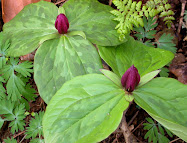Arches National Park – May 27, 2013
Arches was a nice park but I must admit that by this time I
was a little tired of desert canyons, it was crowded and parking my camper was
becoming an issue and I had to drive past several viewpoints. If I had a jeep some of the back roads would
have been loads of fun but my camper was just too big. Nevertheless I did have a treat that I will
get to in a moment.
Park Avenue was my first stop after the visitor center. I did regret not walking through this canyon
to have a better look at the geologic “skyscrapers” along the trail. If you look closely you can see some hikers
at the bottom of the photo. Here is a photo of the sign describing the avenue.
I couldn't get into the parking lot at Balanced Rock but I
did manage to stop briefly on the road to take this photo. For scale I included the
oncoming car. Pretty impressive.
The Windows section of the park was crowded as well so I
just circled around and stopped at the lesser impressive Double Arch.
Pothole Arch below.
Panorama Point was less crowded and the colors in the sand
and vegetation were amazing.
Looking into the opposite direction I found here a group of
Prickly pear cactus in bloom.
Parking at Wolfe Ranch for the climb to Delicate Arch was
impossible so I went onto the Lower Delicate Arch Viewpoint for this view.
Next I climbed up to the Upper Delicate Arch Viewpoint and
found the highlight for me, an Eastern Collard lizard (Crotaphytus collaris). This was my treat for the day.
It was so beautiful. I think this is a female because it is
lacking the dark spots on its throat as described in my field guide.
I don’t know how large this one is but the guide gave the
size range of three to four and three fifths inches. This little sweet heart
totally made my day.
At the end of the trail I spotted several young cactus
wrens.
Fiery Furnace Viewpoint.
I enjoyed the Sand Dune Arch Trail that started between two sandstone
fins. It was like a big sandbox inside with lots of children playing in the sand. It was shady and a relief to get out of the blazing sun.
There I talked with the ranger who was cleaning off graffiti,
a daily job.
Leaving, I walked toward the Broken Arch...
... to look for
flowers and was rewarded with these beauties.
Prickly Pear Cactus
Penstemon
Beavertail Cactus
Winged Dock
Desert Globmallow
Broken Arch in the distance.
Tired, I drove back to my campground and took at few more photos along the way.
In Desert Solitare, Edward Abby wrote in 1968, "It seems to me that the strangeness and wonder of existence are emphasized here, in the desert, by the comparative sparsity of the flora and fauna: life not crowded upon life...with a generous gift of space for each herb and bush and tree, each stem of grass, so that the living organism stands out bold and brave and vivid against the lifeless sand and barren rock."


























































+DSCN5800+for+blog.jpg)



